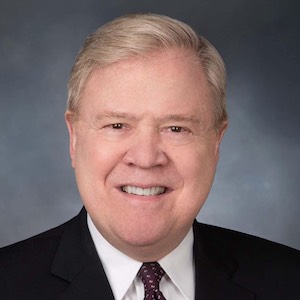
Hon. Q. Todd Dickinson
Senior Partner, Polsinelli, Former USPTO Director
December 21, 1952 – May 3, 2020
As the former Under Secretary of Commerce for Intellectual Property and Director of the U.S. Patent and Trademark Office, Todd Dickinson possessed an in-depth knowledge of the USPTO and its practices, as well as an uncommon perspective on all facets of U.S. and international IP practice and policy.
During his 35-year career, Todd was also Chief IP Counsel for two Fortune 50 companies, with overall corporate responsibility for all IP, including the management of extensive patent and trademark portfolios. This senior-level in-house experience gave him an intimate understanding of the issues, problems and budget challenges facing corporate counsel.
Most recently, Todd served as the Executive Director of the American Intellectual Property Law Association (AIPLA), where he played a key role in the drafting and passage of the America Invents Act and the subsequent PTO rules, including all aspects of post-grant review.
Gone But Never Forgotten
Todd passed away unexpectedly on May 3, 2020, at the age of 67, of respiratory failure at a hospital in Warrenton, Va.
He had been living in Washington and The Plains, in Va., since 2009 with his husband, Robert H. Atkins. They married in 2017 after a two-year engagement and a decade as partners.
See our tributes to this incredible man at: In Memoriam: Q. Todd Dickinson and ‘A Life Well Lived’: Remembering Q. Todd Dickinson

Recent Articles by Hon. Q. Todd Dickinson
A recurring theme that can be traced through the patent reforms of the AIA to the current debate over patent litigation abuse is the issue of patent quality. A key component of the reported abuses is the assertion of allegedly invalid or overbroad patents, the very abuse for which AIA post-grant procedures were created, in order to improve patent quality. These matters of patent quality are being addressed by the changes made to the law by the Judiciary and by Congress in the AIA, which are only now beginning to be felt. It may well be premature to conclude that they are not doing the job. Take one major example, as a former Director of the USPTO in particular, I would support, as former Director Kappos did, giving the post-grant processes in the USPTO a chance to work.

![[IPWatchdog Logo]](https://ipwatchdog.com/wp-content/themes/IPWatchdog%20-%202023/assets/images/temp/logo-small@2x.png)
